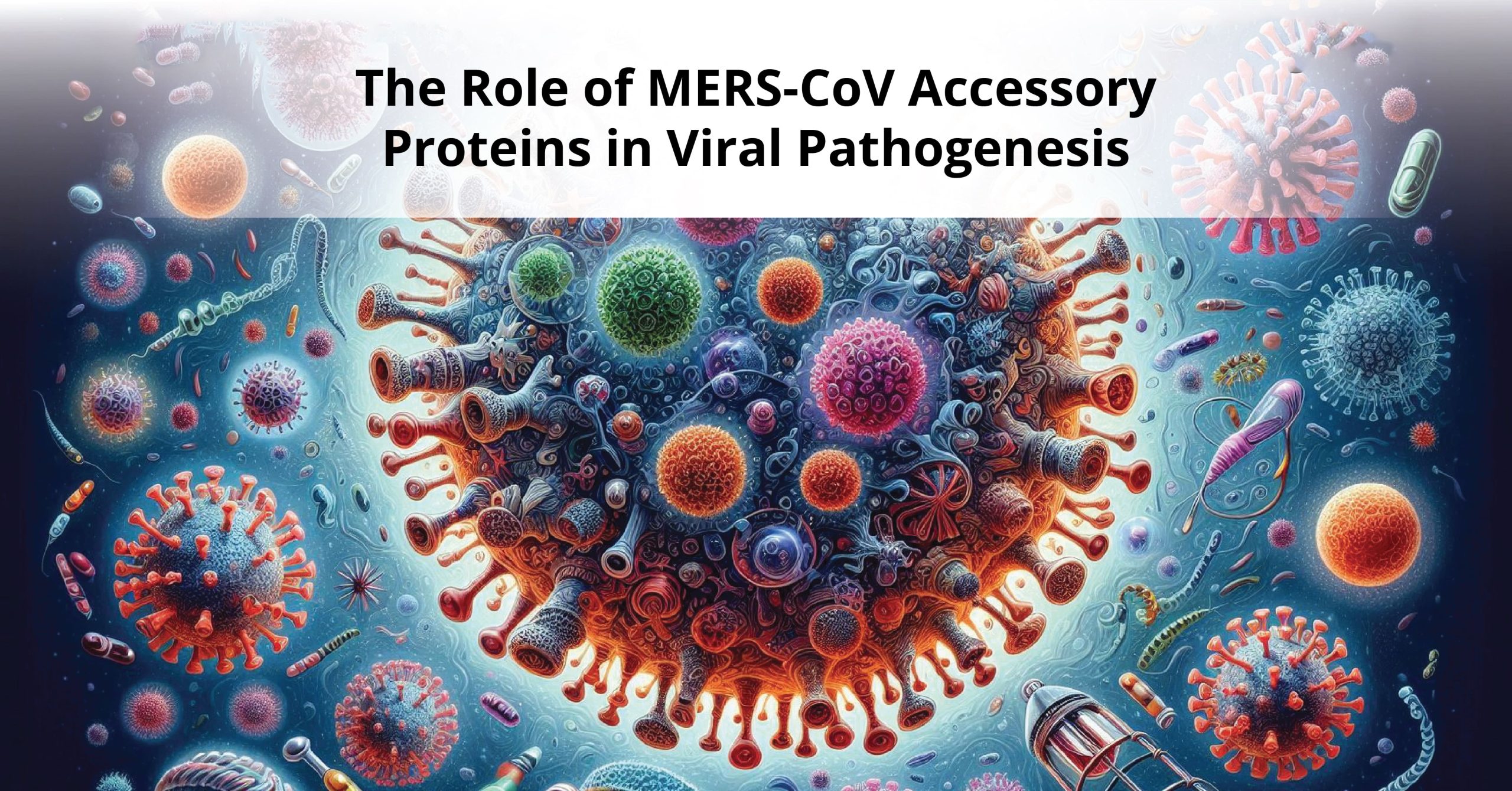Introduction of MERS-CoV Accessory Proteins
MERS-CoV has four accessory proteins among the genes: ORF3, ORF4a, ORF4b, and ORF5. These proteins are involved in several activities that promote the stability as well as the reproduction of the virus within the host. While structural proteins play a key role in the formation of the virus particle and their participation in the formation of the viral coat, accessory proteins are involved in influencing the host conditions for the propagation of the virus. As for the accessory proteins, in the following, we outline detailed descriptions of each such protein and its contribution to the pathogenesis of MERS-CoV infection.
ORF3 Protein: The exact function of MERS-CoV ORF3 protein is still in doubt; however, it has been suggested that it may manage the host’s immune response. Research has suggested that ORF3 can interfere with the host’s interferon (IFN) response pathway, which forms a part of the human body’s first-line defense against viruses. Since ORF3 degrades the respective host’s IFN, the innate immune response is delayed, and the virus can easily spread and replicate. Furthermore, ORF3 contributes to the interruption of several cell signaling pathways, which also help the virus evade the immune system of the host.
ORF4a and ORF4b Proteins: ORF4a and ORF4b are two of the most intensively researched proteins that are encoded within the MERS-CoV genome. Such proteins are well-documented to suppress the activation of the host’s antiviral innate immunity, especially the IFN cascade. ORF4a can bind with dsRNA, thereby inhibiting the activation of the MDA5 RNA helicase, which is mandatory for IFN production. This inhibition, in essence, suppresses the host’s ability to fight off the virus, and therefore the virus is free to replicate unhindered.
Another ORF4b isolate was found to be capable of translocating to the nucleus to suppress the NF-κB signaling pathway that plays a central role in immune response regulation. Through the inhibition of NF-κB activation, ORF4b likely contributes to the down-regulation of pro-inflammatory cytokines and other factors that would help a host mount an effective response to the virus’s presence, which makes it easier for the virus to persist in the host.
ORF5 Protein: Although little is known about the function of the ORF5 protein in MERS-CoV-infected cells compared to ORF4a and ORF4b, it is assumed that it is involved in the replication and evasion of the host’s immune system. Several studies indicate that ORF5 might interact with the host’s immune response to the virus, and the exact modus operandi of this protein is still under debate. More studies on the role and characteristics of ORF5 and its influence on the course of MERS-CoV infection are required.
Mechanisms of Immune Evasion
It is for this reason that a key feature of MERS-CoV accessory proteins is the fact that they can modulate the host’s immune system. This immune evasion is realized through many factors, especially the suppression of numerous signaling pathways indispensable for antiviral manoeuvres. The IFN pathway is targeted significantly; however, it also consists of proteins like ORF4a and ORF4b that interrupt the formation and signaling of IFNs. This blockade avoids the attainment of an antiviral condition within the host cells and the continued replication of the virus.
Also, the suppression of the NF-κB pathway by ORF4b down-regulates the manifestation of IL-8, CCL2, and other pro-inflammatory cytokines and chemokines, which are needed for immune cells to get attracted to the infected area. Thus, MERS-CoV can suppress these responses in the hope that it will not be detected and killed by the host’s immune system, resulting in increased viral longevity as well as pathogenicity.
Impact on Viral Pathogenesis
This review will discuss how MERS-CoV has accessory proteins that are capable of altering and/or escaping the host’s immune response, which plays a critical role in the infection’s development. These proteins suppress several important components of the immune system that would normally help clear the virus from the system; in their place, they enable efficient viral replication and dissemination within the host, resulting in higher morbidity and mortality. For instance, the attenuation of IFN responses is observed to be correlated with higher viral content and severe respiratory manifestations due to the inability of the host to launch an effective antiviral campaign.
Moreover, it was noted that accessory proteins suppress many pro-inflammatory pathways and may lead to uncontrolled immune reactions, causing intense inflammation in cases of MERS-CoV infection. Such dysregulation could lead to an over-heightened immune response as the MERS-CoV infection progresses and causes tissue damage and, therefore, higher mortality rates.
